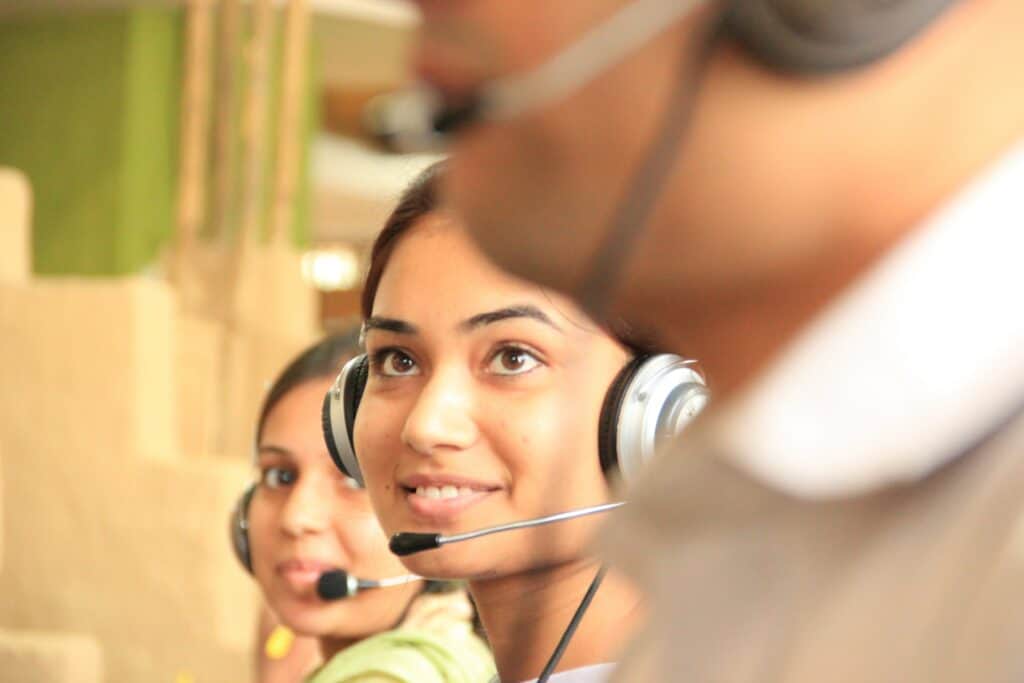Quality of Service on SIP calls
Having a high quality of service (QoS) on inbound and outbound SIP calls is critical for your business. Poor quality will ruin your customer conversations. In this article we will explain some of the strategies we apply to ensure a great experience for you and your customers.

The list of issues that can go wrong in a SIP call is long. Here are some examples;
- Audio delays
Audio delays will make you interrupt each other while in a call. - Poor audio quality
Poor audio quality will make it difficult to hear the other person and force you to ask the other person to repeat what they said. This will become problematic if you have to do it several times during a call. You will additionally appear as more “distant” to the person you are talking to. The risk of misunderstandings is higher. Handling many calls becomes more tiresome. You and your team will be more exhausted at the end of each day. - Failed call attempts
Outbound call attempts that fail, will take time from your workday and prevent you from reaching customers when you need to reach them. - No caller ID
If your phone number isn’t shown properly when you make calls, there is a high risk that the call will not be answered.
In this article we will explain how Sonetel handles these type of challenges to secure an exceptional quality of service on your SIP trunk.

Preventing audio delay
If audio delay in the call is more than 0,5 seconds, you will start experiencing issues with conversations. The dialogue will no longer have a natural flow and you will start interrupting each other.
To prevent audio delay, we use a number of top-tier carriers worldwide, with different geographical locations and with different connection points for outbound calls.
We additionally let the audio flow directly from the local carrier to the end user’s device, to ensure that it travels the shortest possible distance. Only if you activate call recording or if you ask us to activate so called “media relay” – to help you solve issues with your firewall – will the audio flow via our servers.
This allows us to deliver services with low audio latency globally. This is ensured regardless of your location – and the destination to which you are calling.
In case you would ever experience an issue with audio delay with a specific type of call, please contact us and we will see what configuration changes we can do to resolve the issue.

Preventing poor audio quality
Low cost services use various types of compression of the audio, to limit the data bandwidth required, in order to keep costs down. This has a significant impact on the quality of service on SIP calls.
All conversion of audio and compression of audio removes subtle but important aspects of the audio, making it more difficult to hear what the other person is saying. Sonetel only uses top tier service options from top tier providers. We do not compress your audio. This avoids the risk of audio quality degradation.
Packet loss – where part of the audio is delayed or never arrives to the destination – forces your SIP device to fill in the gaps with some guesswork, which degrades quality further. Poor Internet connections at either end can be the culprit of this.
We only use top tier providers connected to the core of the network. Audio quality issues caused by packet loss in your calls is therefore most likely caused by your local Internet connection. If you experience packet loss issues you need to either upgrade your Internet connection or ensure that SIP traffic and audio is given priority in your router/firewall.
Preventing outbound call failures
The carrier selected by our system for handling your call may be unable to handle the call.
This may be due to congestion or local issues. This happens once in a while.
When this happens we will immediately and automatically divert your outbound call to use one of our backup carriers instead. This may delay the call setup with a few seconds but is nothing that you will notice.
We absorb the cost that is created by using more expensive carriers for connecting your call. Most important for us is that the service is reliable at all times and that every call is successful.

Ensuring that your Caller ID is shown
Your Caller ID is the number shown to the person you are calling. It can also be called “CLI” (“Calling Line Identity”).
Caller ID rarely works in a predictable way when making calls with cheaper carriers. It is equally unpredictable when using low cost alternatives from top tier providers.
This is the reason why Sonetel only uses the top tier services from the top tier carriers.
Caller ID can never be guaranteed 100% for calls, given that calls can be made from any number worldwide to any number worldwide. Some lesser developed countries and some local carriers may from time to time have issues with caller ID – although this is rare.
In practice, you can however expect Caller ID to work always, when calling developed countries.
Photo by whereslugo and Jorge César and Andy Art on Unsplash